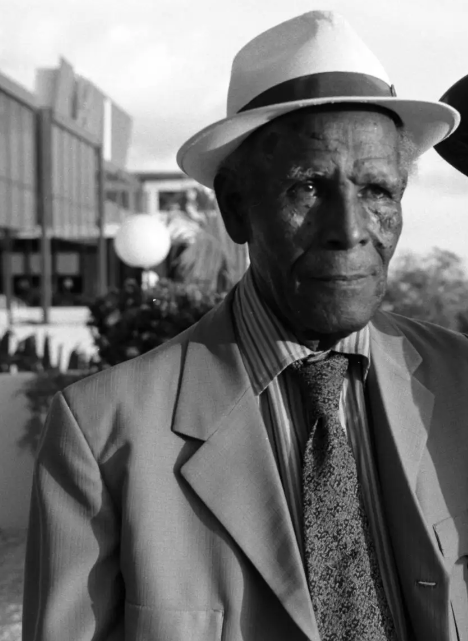
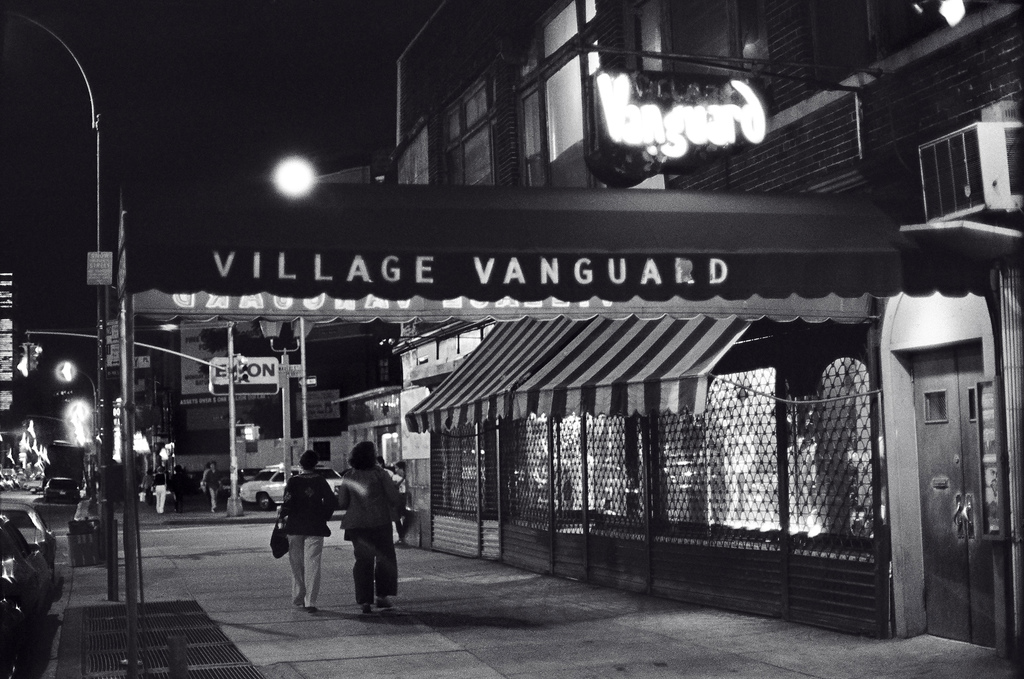


GENRE: CALYPSO
Roaring Lion
Singer / Songwriter / Composer / Musician
Raphael de Leon
Hubert Raphael Charles
Date of Birth: 22 February 1908
Place of Birth: Auroquita (Caura Hills),
Trinidad and Tobago

Died on 15 June 1999 (at the age of 91)
National Awards:
Chaconia Silver Medal (1994)
Hummingbird Silver Medal (1984)
International Awards:
Caribbean Sunshine Award (1994)
Road March Title:
1934 | 1935 | 1936 | 1937 | 1938 | 1941 | 1945
Music Releases: < 250
Published on Vinyl Record, Cassette, CD, DVD & Digital
Website
Roaring Lion – Trinidad, the Land of Calypso
written by: Roaring Lion
People are interested
To know where calypso originated
People are interested
To know where calypso originated
Some say it came from Cuba
Some said British Guyana
Some contend seriously
It was sung by Moses
Crossing the Red Sea.
But ah told dem…
Chorus:
No, no, oh, no,
Trinidad is the land of Calypso
No, no, oh no,
Trinidad is the land of Calypso.
It was a serious contention
That was causing some real confusion
Some said it’s Japanese
Or the folksong of ancient Chinese
A fellow said he is certain
Delilah used to sing calypso to Sampson
One said he heard when Nero
was burning Rome he sang calypso.
But ah told him…
Chorus:
No, no, oh, no
Trinidad is the Land of Calypso
Jump high, jump low
Trinidad is the Land of Calypso
Excitement reached such a tempo
When I said that the calypso
Is an ancient French ballad
That was adapted by Trinidad
A fellow said if you please, it was sung
By Espinosa and Socrates
And Hannibal sang a calypso
When crossing the Alps to meet Scipio…
Chorus:
No, no, oh, no
Trinidad is the Land of Calypso
Jump high, jump low
Trinidad is the Land of Calypso
One said that in India
They sung calypso when charming cobra
Another said that Elijah
Sang calypso in the chariot of fire
They argued with one another
Trying to find out the owner
They mention every country
All but the land of La Trinity
But ah told dem…
Chorus:
No, no, oh, no
Trinidad is the Land of Calypso
Jump high, jump low
Trinidad is the Land of Calypso.
Summary
The Life of the Roaring Lion
For the official first artist profile on this virtual music archive, I was looking out for one with a strong first impression for all of you, but I have to confess, after my research, I am even more amazed to introduce you to the life of the Roaring Lion.
Often remembered as the „walking encyclopedia of calypso music“, some of his songs had an outstanding history, that I will present to you chronologically, and believe me, it’s going to be a lot – and way more than I expected. His pioneering material will cover topics like history, the life of calypsonians, the evolution and development of the calypso tent, steel pan, limbo, Kalinda, and Carnival. By being a leading figure during the “Golden Age of Calypso” from 1934 to 1950, his writings and his music releases are representing a hands-on perspective of the happenings, trends, and significant people of that era.
He was born before World War I and experienced the Great Depression of the 1930s which was followed by World War II. He lived the rising times of Trinidad and Tobago’s Independence and experienced historical happenings in Great Britain. Performing throughout the Caribbean, in New York nightclubs and theaters, for government personnel, the queen, tourists, and American soldiers, he rubbed shoulders with movie stars, actors, musicians, and university lectors. We can literally state: Calypso was his life by being a leading entertainer, innovator, trendsetter, songwriter, and composer for music from Trinidad and Tobago.
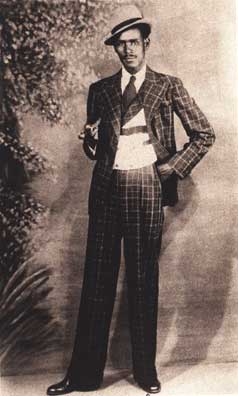
1900s
Let's go back in time
There are several things, that will be discussed in this article concerning the sharing of information, which seems to mutate into a problem in writing history. There are several pieces of information on several platforms not quoted correctly, including his name and his origin.
The oft-printed statement that Roaring Lion was born „Hubert Raphael Charles“ seems to be incorrect, as far as the surname „Charles“ is concerned. It proves that not every Wikipedia article is enough for getting the right information. The author quotes: “he spend his earliest years in two orphanages, before being taken in, following his mother’s illness by an elderly lady named Miss Charles, who lived on Coffee Street in San Fernando (Southwest Trinidad)”. He was later on “introduced to an Indian family in San Fernando, who wanted him”. He was (supposedly) adopted by Najeeran Khan, who became his adoptive mother. Lion’s maternal mother’s surname was “de Leon”, a name that he carried later in life.
In an interview from 1990, Dennis Hall refers to a man called Norbert Charles as his father, which he did not react to, and quoted that his name is Rafael Arius Cairi Llama de Leon: “Well my father’s name was Cairi which he told me meant the name that they call Trinidad“. He met his biological father later in life, who told him the right name. His first music releases have still been made under the name “Hubert Raphael Charles”.
His love for writing and music is rooted in his childhood. Growing up in the orphanages, he learned how to sing and compose, as well as play the clarinet. Doe to harsh treatment he abandoned the institution “due to the harsh treatment”. Even though the artist did not have any more than a primary school education, he was considered ambitious, intelligent, charismatic, handsome, and excelled at school”. In the articles, that I read and documentaries I revised I could neither find any location of the orphanage nor the school he went to.

1930s
The Golden Age of Calypso
Overcoming his shyness, his career started with full success. In an interview with Alvin Daniell, released in 1993, he said, that it felt like he got popular overnight, recognized by already established calypsonians. He found himself performing in the first commercial calypso tent in 1927, led by Chieftain Douglas in Port of Spain (Trinidad).
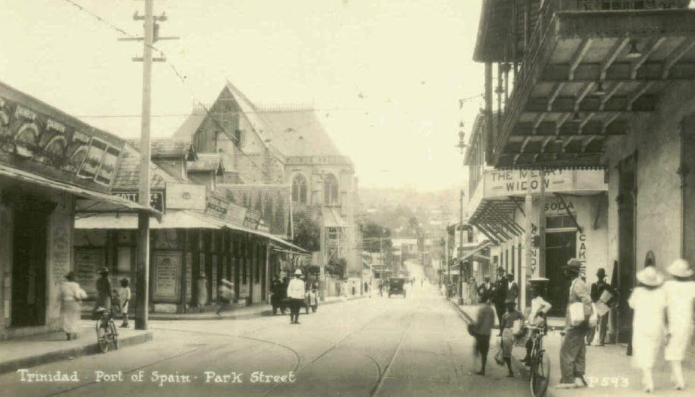
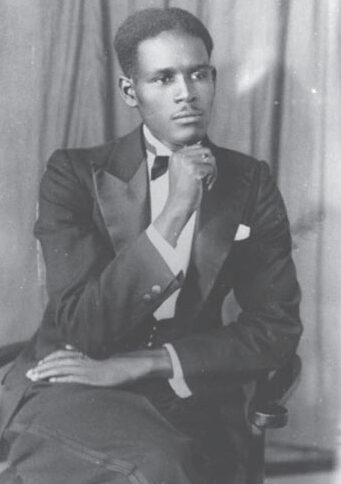
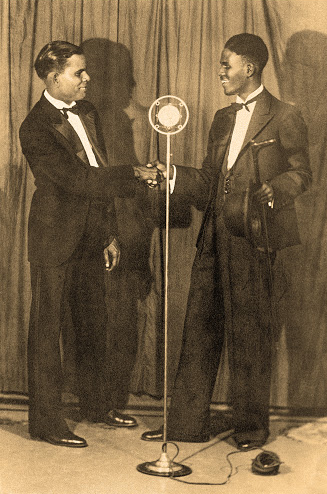
Ray Funk states in an article that he and his friend Atilla The Hun were “the first to do calypso duets and both were involved in the introduction of calypso dramas in the tents”. He also mentioned that Roaring Lion was “respected as an ‚experimentalist‘ in calypso, he could write calypsoes on any theme“ and „he was one of its greatest practitioners”.
At the ‚Victory Tent‘, located on Nelson Street in Port of Spain (Trinidad) he met Atilla The Hun for the first time, the start of a long friendship, even considered a „marriage“ by the artist himself. Another name mentioned for this tent is the ‚Salada Millionaires Tent‘ (located at 47 Nelson Street) – to me (for now) it is unsure if it is the same location.
In 1933, Lion won the prize (offered by Y. De Lima & Co) at „Victory Tent“ and was one of three calypsonians selected to participate in a pioneer tour to entertain tourists on cruise ships on the waters to Grenada, St. Vincent, and Barbados.
Together with the calypso artists Atilla The Hun, Lord Beginner, King Radio, as well as clarinetist Willy West and his Band (and a group of masqueraders), were financially backed by an East Indian company in San Fernando, which did the first time in history such a sponsoring for musicians.
Together with Atilla The Hun, Lord Beginner, King Radio, as well as clarinetist Willy West and his Band (as well as a group of masqueraders) were financially backed by an East Indian company in San Fernando (Trinidad), which did the first time in history such a sponsoring for musicians.
For this trip, Roaring Lion wrote a song named “Friends of Barbados” commemorating that trip. It was recorded in 1934. Lion states that this visit was documented in the Barbados newspapers in 1933.
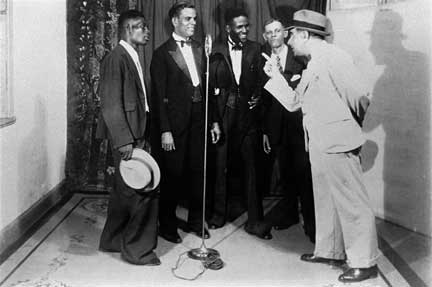
In 1933 the Roaring Lion was proclaimed a “monarch”, which was hailed or crowned by his peers. The monarch competition originated years later.
In March 1934, the Portuguese-origin Eduardo Sa Gomes, the Trinidad agent for Brunswick Records sent Lion and Atilla the Hun to record in New York and resulting in one defining moment in calypso history.
While Lionel Belasco and Wilmoth Houdini, as well as others, have been recording calypsoes in the United States before, this was the first trip for a calypsonian based in Trinidad to travel to New York in contract to record. Their success proved to be the start of a series of annual trips by well-selected calypsonians.
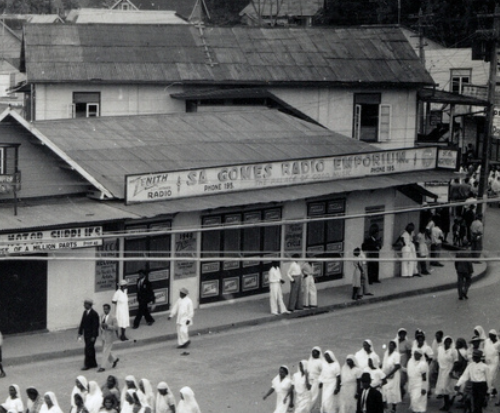
On the same trip, Lion entertained the President of the United States, President Roosevelt at the Waldorf Astoria in New York. No other calypsonian ever achieved this again. When Lion was asked by President where he & Atilla were from, the artist responded “The Land of Calypso” a name by which Trinidad is still known by today and is the featured song in this article.
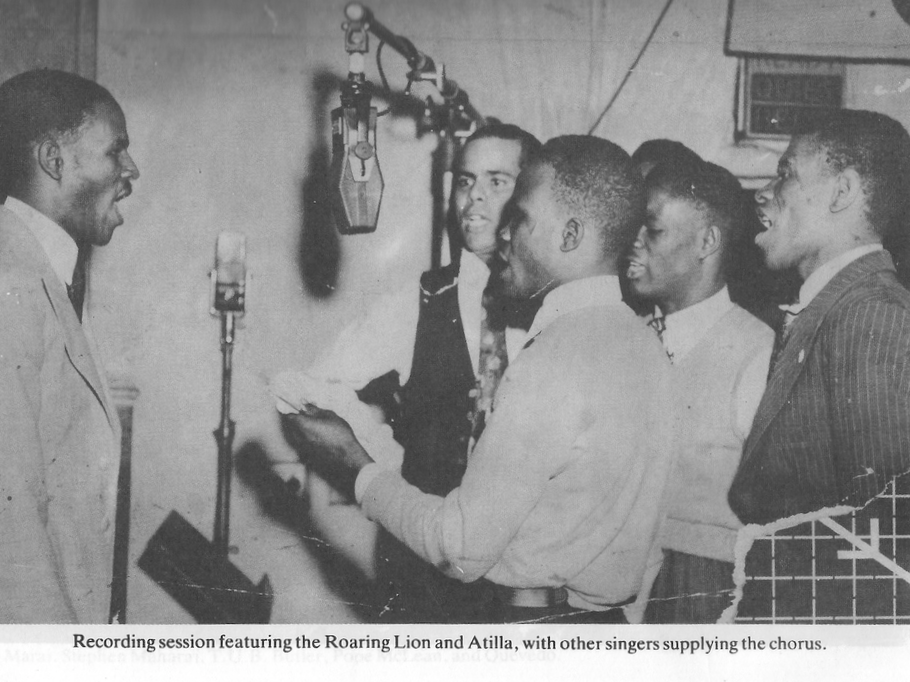
The calypsonians have been treated like upcoming superstars, being interviewed by Hollywood star and US radio talk show host Rudy Vallee in a live, coast-to-coast WEAF radio broadcast from Broadway in Manhattan, which also reached Trinidad. The host is perhaps the equivalent of today’s David Letterman or Jon Stewart show: “People gathered around PA systems throughout the country to try to hear their local boys, who were being broadcasted from the USA”. It must have been a proud moment for many in Trinidad and Tobago.

First recorded in 1934, „If You Wanna be Happy“ (also known as „Ugly Woman“ later in time), was at first published under Roaring Lion’s real name, Hubert Raphael Charles. This song will go down in history.
Lion won the „Road March“ title for the first time in 1934 with “Wanga”. The song was according to Roaring Lion, a new style of calypso, he called it the “Ballade“ or „Bracket Calypso”. In rehearsing this release I can’t find any evidence of a „new style“. I believe that his “J’ouvert Barrio” had significant style differences, which will be discussed at the end of this article. Until then there is still a long way to go.

In 1935 Roaring Lion was touring io board a cruise ship from the United States, named the S.S. Sean Pen, to entertain tourists while sailing to Surinam, Guyana, and back to Trinidad and Tobago. As stated by the Roaring Lion Foundation: At this point in time, there were many places, where calypsonians were not allowed entry, denied permission to sing there, or both. Therefore when a cruise liner or tourist ship employed a calypsonian back then, it has been a big step forward for the calypso representation.
Roaring Lion was considered one of the „scandalous“ calypsonians. His song „Netty Netty“ was banned in Trinidad and in Grenada. In 1937 the colonial authorities in a heavy-handed manner enforced their “Sedition Laws” and banned “Netty Netty” & “Sally Water” and all the records were dumped into the waters of the Port Of Spain harbor (or even directly on their way into the Gulf of Paria).
Documented by the Roaring Lion Foundation, a further scandal occurred when an excursion boat, named the ‚SS Trinidad‘, took dozens of calypsonians to Grenada. Protests were made and letters were sent to the editor from Grenadian media houses, who expressed horror about “Netty Netty” being played in their country.
In 1937 Roaring Lion responded with a calypso „Excursion to Grenada“. about the incident that explained his position and attacked censorship. He earned for “Netty Netty” the road march title that same year.
As I find, Roaring Lion’s „Baboolala“ from 1938 sounds very much like „Netty Netty“, here performed together with Atilla The Hun. What do you think?
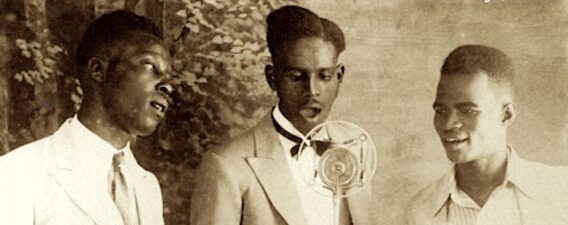
As the Roaring Lion Foundation documented: “At the start of the ’39 Carnival season Lion recalled that he had nothing of worth to stand up against his peers. He was worried and searched his creative mind for something of substance“. Roaring Lion thus introduced a brand new style into calypso by combining several former road marches or popular songs into a “Cavalcade of Calypso or Calypso Medley”. It proved to be a hit with the audiences that season.
From 1934 to 1941 alone Roaring Lion recorded for Brunswick and Decca Records 95 calypsoes, moving back and forth from Trinidad to the United States, followed by Attila the Hun with 55 records.
When World War II started, he even contributed a song about how Germany invaded Poland. We are getting more into it just now.
1940s
Calypso & Steel Pan
In 1940, Alexander Ragtime, a steel pan band leader, requested Roaring Lion to compose a song for the pan. The calypsonian was a trained musician, who could read, write and play music well, the clarinet remained his preferred instrument, but he also played African drums, and shack as well as performed a “bottle & spoon walk”.
This is supposedly the earliest documented recording of the pan to date. As the Roaring Lion Foundation documented, “this was a bold risky move because at the time pan was not socially accepted and associating with the movement for an upward moving individual was a risk. Lion admire the pan and saw its merit and future in Trinidad and Tobago’s cultural landscape, and thus wanted to assist its development and status”.
It resulted in the song “The Alexander Ragtime Band” is the genesis of a long-lasting romance between calypso and pan, which has lasted until today.
That year, Roaring Lion made a bold move and recorded pan on one of his songs called “Lion Oh” also known as “Leggo Mi Lion”. This is considered to be the first steel pan calypso arrangement ever recorded.
In 1941 Roaring Lion was successful with a song called “Woopsin Whoopsin” or “Man Dancing with Man”. It was so popular that it started a dance craze like that and went on to win the road march (again). The song was about the plight of homosexuals in Trinidad’s high society.
That season he also appeared in the calypso drama ‚Adam and Eve in the Garden‘ in which he played Adam, Atilla the Hun played Eve and calypsonian King Radio performed the Snake.

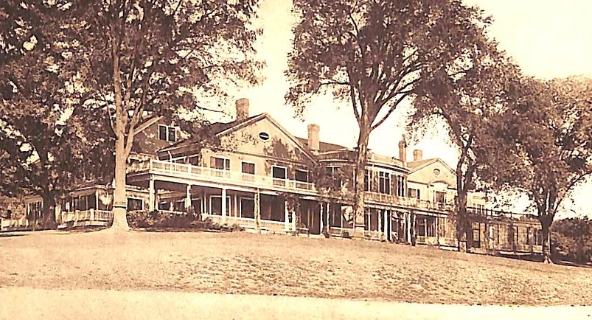
During that season Roaring Lion made it to the ‚Trinidad Country Club‘ and broke the “colored bar” in the prominent colonial establishment. Prior to this, no calypsonian had ever sung there.
Lion’s historic appearance at the country club opened doors to other calypsonians, and by extension helped to elevate the social status and acceptance of the calypsonian throughout the country. As the Roaring Lion Foundation documented, did Atilla the Hun perform there not too long later. They note that “due to his popularity, versatility, and consistency, he became the official entertainer at “Government’s House” in Trinidad and Tobago where he entertained visiting dignitaries and Heads of State for the next 10 years”.
With his permission, Roaring Lion’s song “Ugly Woman” was used in a Paramount Hollywood movie called “Happy Go Lucky” released in 1943 in the United States. The American comedy is directed by Curtis Bernhardt. The Soundtrack features two songs Sir Lancelot (including Ugly Woman) as well as Dick Powel, Eddie Bracken and Betty Hutton, the main actress of the film.
The film was a worldwide success giving calypso as a genre its first real global exposure. It was also the calypso’s first brush with Hollywood and should be noted that the use of calypsoes in films became a trend and this trend continued up to the late 1950s.
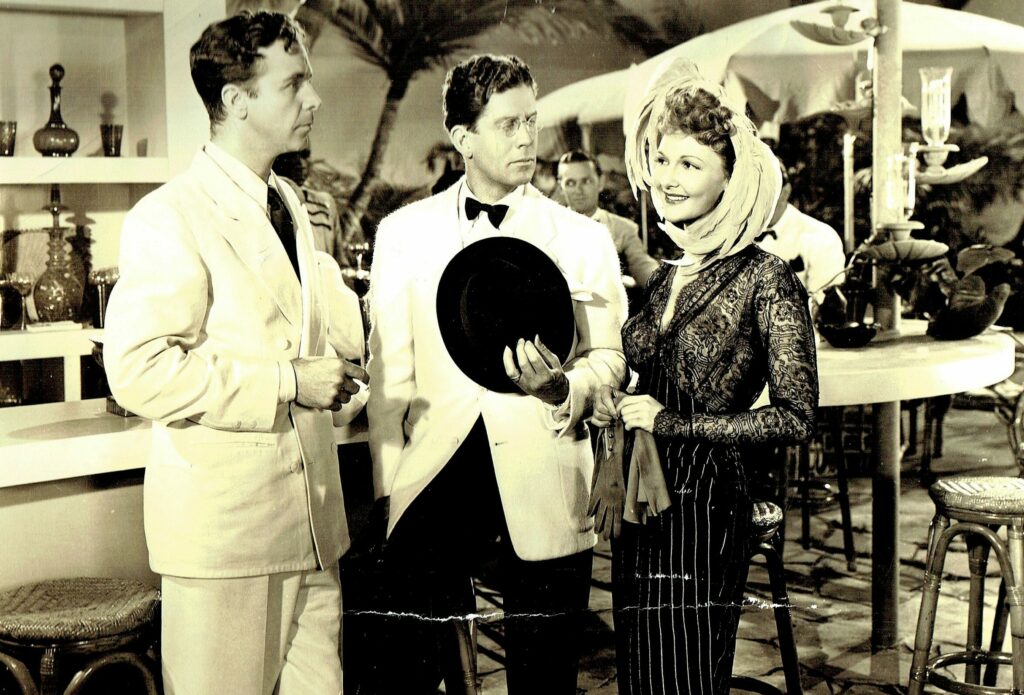
From 1942 Roaring Lion was occupied by the American Soldiers stationed in Trinidad. He entertained the G.I.’s stationed, “from one base to another”. Due to the war, there have been no Carnival competitions from 1942 to 1945. In the ‚Victory Tent‘, he responded to the government’s decision with “Governor Say No Mas”. Also, he was appearing on shows at the theatres throughout Trinidad.
Ray Funk documented that around that time Roaring Lion and Atilla the Hun “attempted to visit the US, they were arrested on suspicion of espionage and thrown into jail on Ellis Island, where they languished for 14 days until a Decca lawyer could free them”.
The following songs are some of Roaring Lion’s „Road March“ winnings and contenders between 1934-1945. During that time, the road march was referred to as a „Leggo“ or „Lavway“.
– Dynamite (Atilla & Lion 1934)
– Wanga (Road March 1934)
– Dingolay (Road March 1935)
– Bamsee Lambey (ca. 1936)
– Ask No Questions (1936)
– Advantage Mussolini (Road March 1936)
– Netty Netty (Road March 1937)
– Sally Water (1937)
– Out The Fire (ca. 1937)
– Nora Nora (Road March 1938)
– Monkey (late 1930’s)
– Germany invaded Poland (1940)
– They Want for Come Kill Me (1940)
– Papa Chunks (ca. 1940)
– Woopsing Woopsing (Road March 1941)
– Pam Pa Lam (1942)
– Olga & The Catfish (ca. 1943)
– The Governor Say No Mas (1943)
– Don’t Stop The Carnival (1942)
– Marianne (Road March 1945)
– Dorothy Went To Bathe (1945)
– Fan Me Saga Boy (1947)
– Lost Watch (ca. 1947)
Roaring Lion won a total of seven road march titles with 5 consecutive wins.
In 1945 Roaring Lion was contracted by another American recording company, where he recorded eight other songs and signed to sing at the famous night club “The Village Vanguard”, in New York (USA), which still exists today. Ray funk noted, that he also performed at the “Blue Angel Nightclub”.

At this time he recorded one of his most famous songs “Maryann”, which was supposedly the unofficial road march on Trinidad Carnival in the same year. The song will be later covered and sampled by the numerous Caribbean and international musicians. Two of the versions reached Number 3 and Number 4 on the Billboard charts during the late 1950s.
The Roaring Lion Foundation documented that the artist established an entertainment center for tourists called “Calypso Ville“. It was located at 65 Quarry Street, East Dry River, Port-of-Spain (Trinidad), which was operating till 1951.
Ray Funk wrote that the location was at another place, at 59A Glouster Lodge Road, which is in the same area but on a different corner. Further research needs to be done to find out the right information.
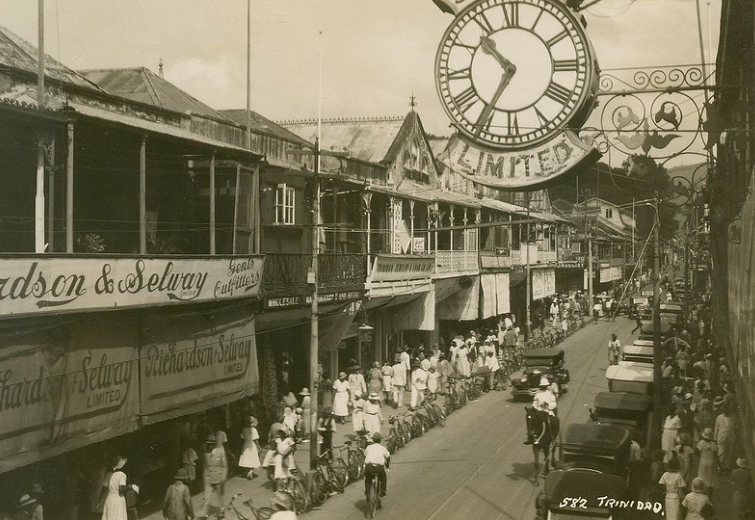
1950s
Calypso in Hollywood
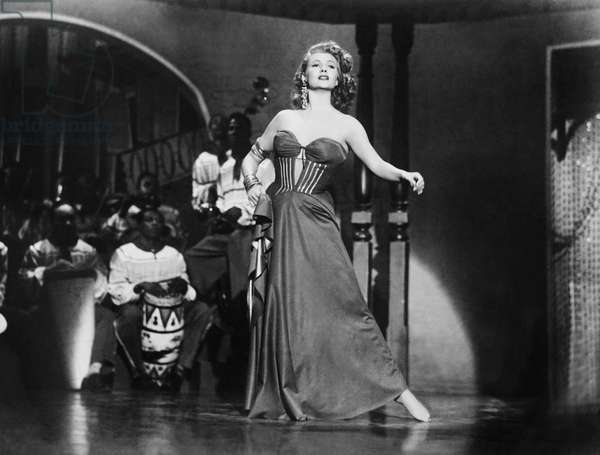
In 1948 a Hollywood company visited Trinidad to produce a movie called “Affair in Trinidad”, which was released in 1952 in the United States and translated into many languages, including French, Spanish, and German. Roaring Lion sang several calypsoes in that movie and, documented by the Roaring Lion Foundation, also the Casablanca Steel Orchestra was featured in the film. Unfortunately, I could not find any official proof, that it was Roaring Lion, who sang the calypso songs in the movie. He also mentioned that Casablanca was featured in the film. The film was directed by Vincent Sherman and starring Rita Hayworth and Glenn Ford, released by Columbia Pictures.
Here is a beautiful piece of this movie, enjoy the „Trinidad Lady“. I love that she is dancing barefoot.
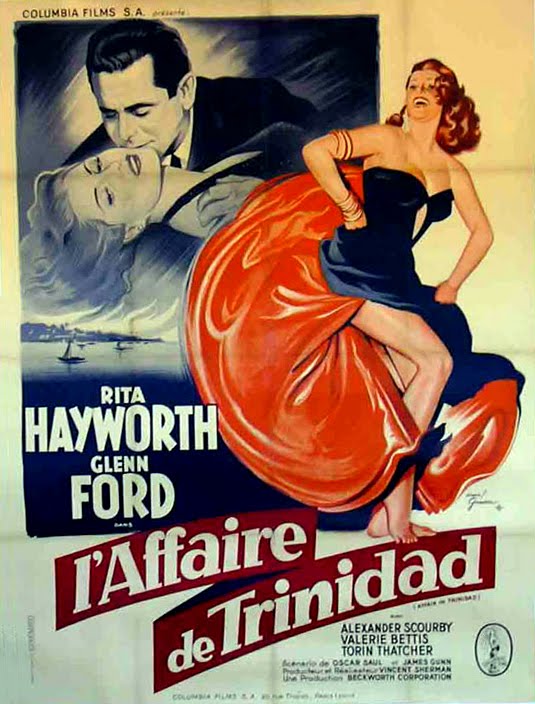
1950s
New Beginning in London
In August 1951, Roaring Lion and the Trinidad All Star Steel Percussion Orchestra were chosen to officially represent Trinidad and Tobago at the “Festival of Great Britain” in London (United Kingdom). The festival takes only place once a century and it was the first global event, featuring cultural diversity from most parts of the British Empire. The artist performed at the Royal Albert Hall and did several programs for the BBC.
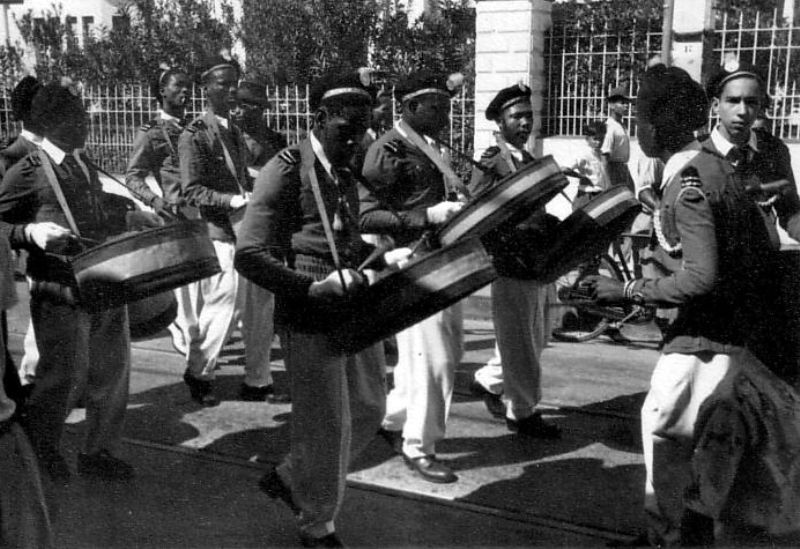
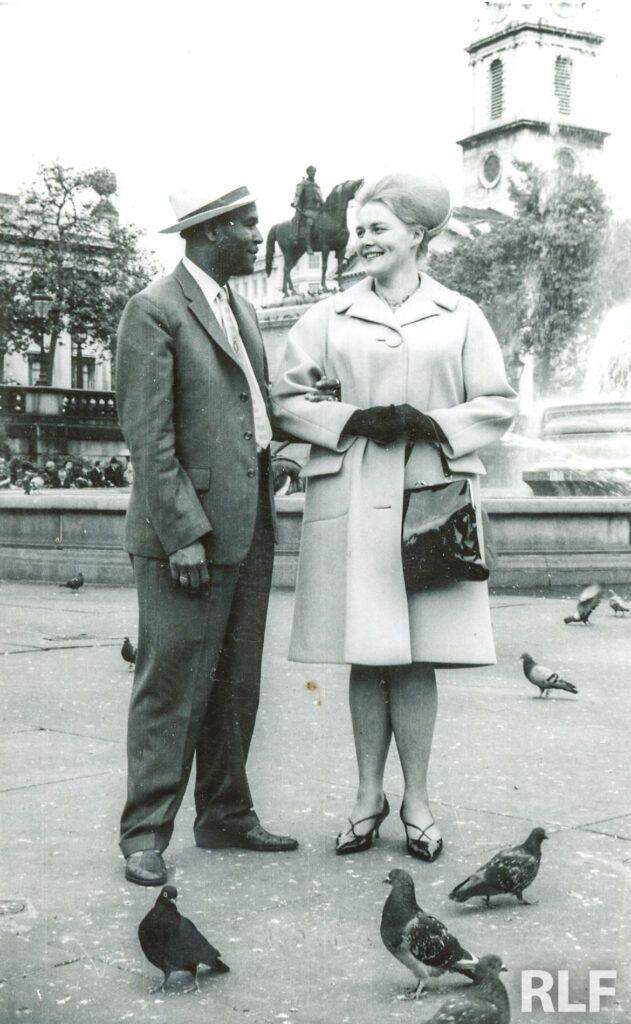
The calypsonian decided to stay in England and met his upcoming wife, the Norwegian Marie Louise Ruud. In the next years, they gave life to four children. Documented by the Roaring Lion Foundation they “bought two houses in West Kensington and they set up the production of a cosmetics company called, “Rafael de Leon Products Ltd“. These hair products catered for the hair & skin care of the growing African & West Indian population in London at that time”.
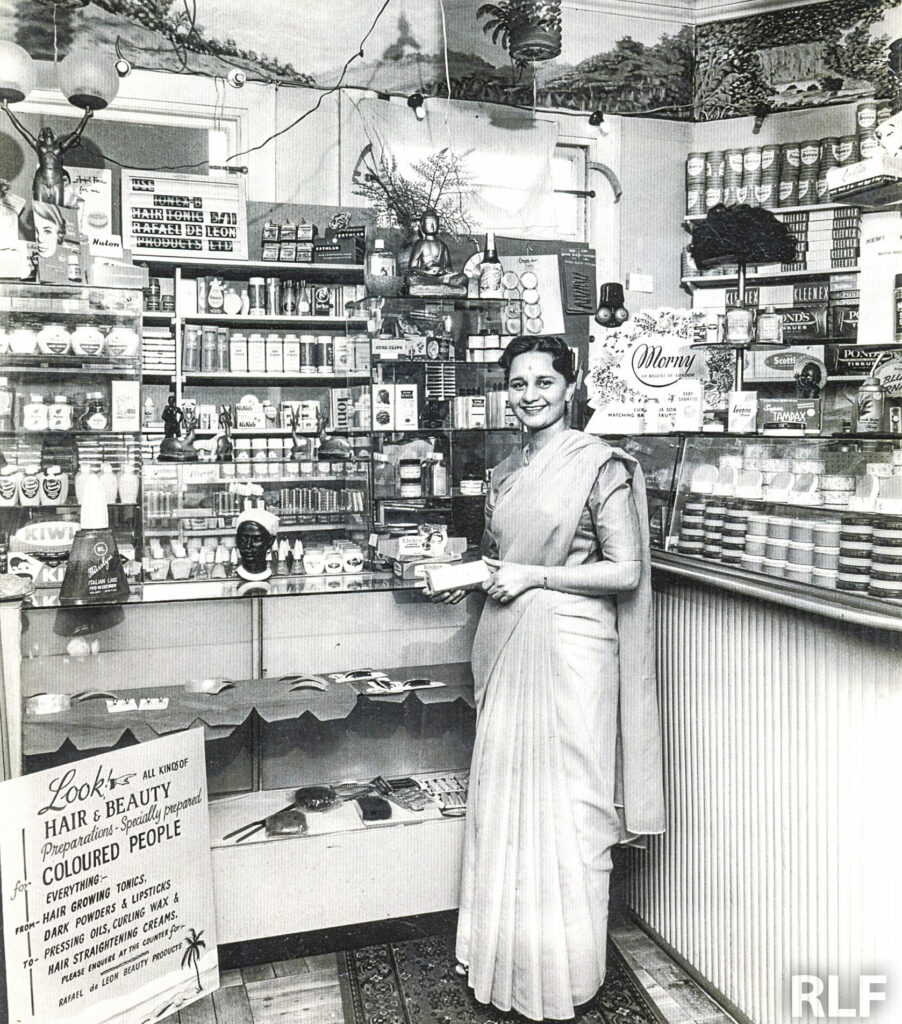
In 1952 Roaring Lion was traveling to the Netherlands, having a contract with the La Cubana Night Club in Amsterdam, where he stayed for eight months. The club still exists today. After his return, he kept busy appearing at nightclubs, theatres, and music halls. According to the Roaring Lion Foundation, he wrote a calypso lamenting the death of His Majesty, King George IV, and sent it to the Queen. She acknowledged it by letter respectfully.
Roaring Lion’s importance for Great Britain was documented by the Roaring Lion Foundation with the following example: “a government agency responsible for enhancing safety on British roads, requested a tailor-made song from Lion, a kind of jingle which they could use in a campaign to raise awareness about the dangers of the road. London was experiencing an enormous increase in population and traffic simultaneously. This combination spelled more accidents, injuries, and road fatalities”. The artist wrote “The Highway Code” for them.
Together with his wife, Roaring Lion was also running the “Colored Peoples‘ Accommodation Bureau”, which located and rented out apartments to Africans and West Indians residing in London. According to the Roaring Lion Foundation at this time it has been common to see advertisements that stated: “For Rent: No Blacks, No Dogs & No Irish”. At this point in time, it was neither socially acceptable for a black man to a court or marry a white woman.
As a result of racial tensions, the family was on several times attacked in their home: “Their front door was nailed shut, tarred and feathered and “smoke bombs” were thrown into the house via the post shutter or the windows. On one such occasion, Marie de Leon fell down the stairs and broke her leg. The artist was also attacked outside of his home but explained: „that he was always prepared for the worst“. Their children were present while these smoke bombings took place”.
1950s
Roaring Lion's songs on Billboard
Generally, the history of calypso is filled with examples of musicians getting covered by other artists, achieving with the work a certain status or even chart position. Especially in the United States of America, calypso was a piece of well-received music.
According to Ray Funk, Roaring Lion claimed, that Harry Belafonte brought out his songs “Ugly Woman”, “Out de Fire” and “He Comes from the Glorious Kingdom” without giving permission. The famous American singer was selling millions of copies of his “Calypso” album. Roaring Lion noted: “I wrote to him about how he capitalized on my songs, and he simply told me that my songs weren’t registered“, still he admitted that the paperwork was lacking: „It’s true, we didn’t know about copyright back then. But I recorded those songs“ firstly. I will discuss it later in this article.
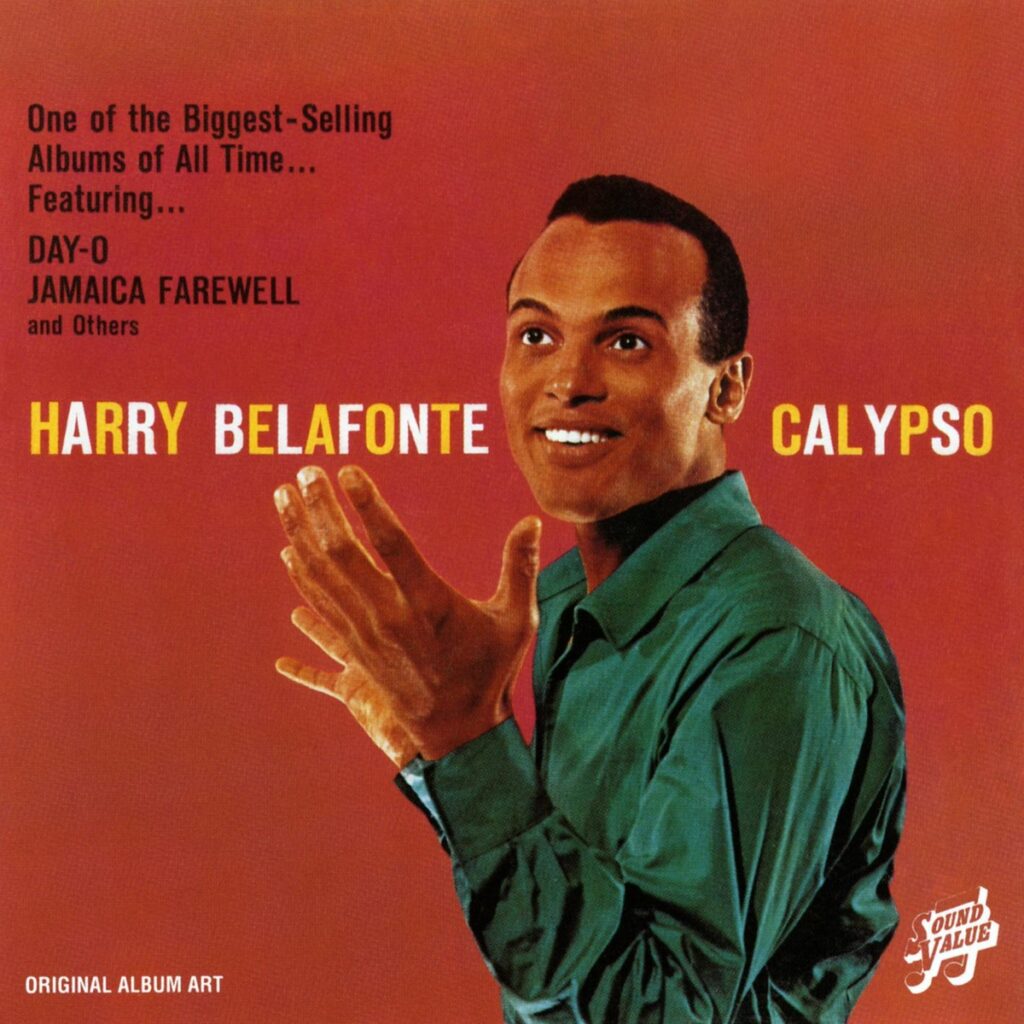
In 1957 the US American band „The Hilltoppers“ released „Marianne“ as a cover version. In that year the Billboard #3 charting rack was the final national top 10 hit for the Band.
In the exact same year also the US American group Terry Gilkyson & The Easy Riders released „Marianne“. Also, this song was on the Billboard Charts in 1957. Which version do you prefer?
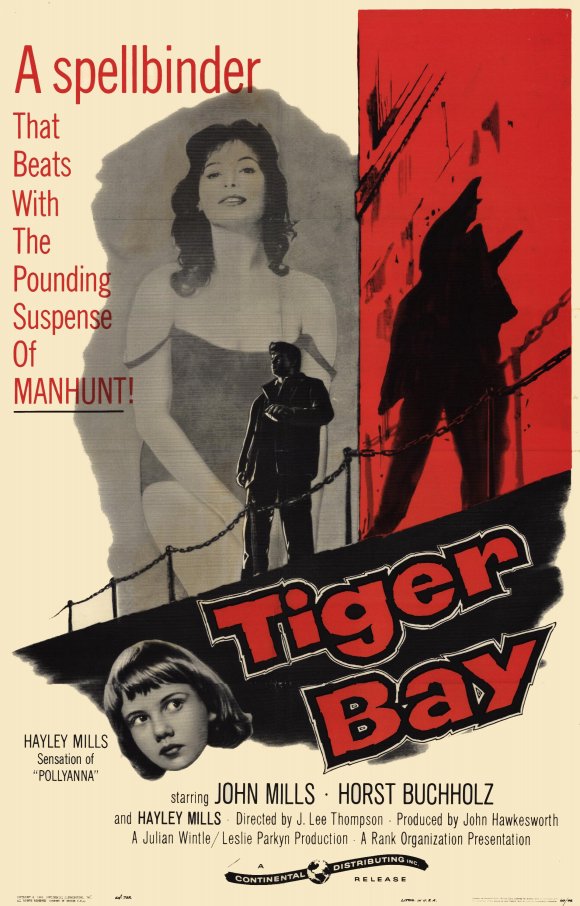
At this point in time, he was about 55 years old. While in London he recorded over 80 calypsoes like “Tambourine”, “Nigerian Mama”, “Money”, “Cheek to Cheek” and “Come Punksy”. He also released, what can be described as a gospel calypso named “While Shepard’s Watch Their Flocks By Night”.

1960s
Home is Calling
Something that I could not find in all the articles I read and videos I reviewed, was how the musical relationship between Atilla and Roaring Lion developed over the years. Sadly Atilla died in 1962 when Roaring Lion was still in the United Kingdom. His career will be examined soon.
Shortly after the official declaration of Independence of Trinidad and Tobago, Roaring Lion returned to his home country in 1963 and continued his career as a calypsonian at the Lord Kitcheners ‚Calypso Revue‘ tent.
The following quote is by Lord Kitchener, describing Roaring Lion at this time: “Long ago when people went to the cinema to hear calypso, few went inside early. The majority remained outside the cinema waiting to see if Lion would appear. When this well-dressed bard appeared they would then flock to the paying booths, pushing, rushing, and yelling for Lion. Look him! They shouted. Only when they saw him in person, they would make an attempt to go to the show inside. No other singer has reached the heights and glory he attained”. Ray Funk wrote about him that he was “always impeccably dressed and known for his lion-headed cane“.
In 1963 The Dovells, a group of American doo-wop singers from Philadelphia, went straight to the Billboard Hot 100, as well as the r&b single charts with their remake of Roaring Lion’s „Ugly Woman“. This example proves that calypso can technically be fused with other music genres. This is how „If You Wanna Be Happy“ came about.
Another release of “Ugly Woman”, very close to the Hilltoppers version, sung by American singer Jimmy Soul was published in 1963 and remained at number one on the Billboard Charts for 14 weeks while the r&b version also topped the chart at number one. The song was composed 20 years ago.

1970s
Teaching the Next Generation
According to the Roaring Lion Foundation the calypsonian started a candle factory in Morvant. He was very interested in Trinidad and Tobago Folklore, and he will, later on, have ambitions of releasing a book about his findings.
Radio Trinidad gave the artist his own daily ‚Calypso Hour‘ show, which was broadcasted for a year.
1965 and onward Roaring Lion lectured Locally at elite Secondary Schools such as St. Mary’s College and Queens Royal College, as well as at the University of West indies. In the United States, he lectured at institutions of higher learning like Rhode Island College and Brown University. He has also been interviewed by scholars and students from France, Japan, England, Norway, Denmark, Holland, Germany, Sweden, Canada, Nigeria, Ghana and the United States. This was the time when the artist got dubbed by the Trinidad and Tobago media as “the walking encyclopedia” of calypso.
At the end of 1969 the first “Calypsonians Association” in Trinidad and Tobago, evolved into the later TUCO (Trinbago Unified Calypso Association). Roaring Lion was chosen to become the first president.


In 1970 Roaring Lion wrote and narrated thirteen, 25 minute radio programs about the “golden age” of calypso (1934-1950). These programs gave insight to the calypsonians that he felt had contributed most to the development and international success of the calypso during that time.
This is the TV Trailer for the very popular British TV series from the 70s „Love thy Neighbor“, named after the Roaring Lions song. The show was broadcasted from 1972 to 1976 and had 8 series and 53 episodes. It was produced by Thames Television for the ITV network.
The show has been criticized for its „politically handling of issues of racism, although its writers have claimed that each episode included both anti-white and anti-black sentiment“. After watching a few episodes and and trailers, I would like to confirm this statement. To stay politically correct, I am not sharing these impressions. But if you wish, you can go ahead and make your own picture about the series, if you wish to.
This is Roaring Lion’s „Love thy Neighbor“ released in the 1930s.
In an interview with Alvin Daniell in 1993, he mentioned that he wrote the song „Out de Fire“ for Harry Belafonte. I was only able to find online a re-recording of him. Harry’s version was released in the 70s. We will speak about Roaring Lion’s music influence in a new style of soca later in this article.
Harry Belafonte – Out de Fire (1971)
Roaring Lion – Out de Fire
(Remake from 1996, originally from 1937)
In 1975 the “Rafael de Leon Place”, a road located in San Juan (Trinidad) was named in honor of Roaring Lion. It is close to Kitchener Avenue and George Bailey drive, all famous musicians by the way.
While searching for this place on Google, I stumbled over an institute in Madrid (Spain) named “Rafael de Leon Centro Cultural”. I could not locate information about the choice of this name of the theatre, but I thought it would be interesting to mention.
For the 10th anniversary of Trinidad and Tobago Independence in 1972 he sang “Formula for Nationhood” and “Trinidad Carnival” and appeared in several calypso tents across the nation. In 1976 he sang at the “Professionals” tent and recorded a few singles like “Carnival Long Ago” and “Eye of a Needle”. During this time he was supposedly managed by Ellis Chow Lin On (father of the famous “Chinese Laundry” Anthony Chow Lin On, who paid high contributions to the careers of Maestro and David Rudder. By the end of the decade, he had largely stopped performing.
1980s
"The Saga of Calypso"
In 1981 Lion received the Hummingbird Silver Medal, one of the highest awards in the country, for his contribution and service to the art and culture of Trinidad and Tobago.
At around the same time, he wrote “The Saga Of Calypso”, a series of articles published in the Friday edition of the Trinidad Evening News. According to the Roaring Lion Foundation, “It gives insight about people, places, gossip, calypsonians, songs”. He also wrote a few “folk tale” articles for “The Bomb” weekly newspaper about ‚Douens‘, the father of the forest ‚Papa Bois‘, the ‚Anansi Spider‘, ‚La Diablesse‘, and the ‚Soucouyant‘. I can only recommend making your own little research on the different folklore characters. It shows another time the strong alliance that he had with his home country Trinidad and Tobago.
Leaving a part of his family in Norway when he left, he did and extended sight-seeing tour of the country at an invitations of one of his sons who lived there. I believe it was Akhenathon De Leon, who turned out as a political activist for colored people in Norway. I believe he is also the curator of the web presence of the Roaring Lion Foundation. I wrote him about this article and hope he will get in touch for with me for giving me a deeper insight.
During a visit of the Pope in Trinidad and Tobago at the President’s House and at the Queens Park Oval in 1985, Roaring Lion received his blessing after writing and performing “Welcome to Pope John Paul 2nd” for him. According to the Roaring Lion Foundation, it was something that “convinced him that his place in heaven as a calypsonian was guaranteed”.
His knowledge of music and history, as well as further research, made him publish “Calypso from France to Trinidad: 800 Years of History”. The original publishing date varies according to Google and Amazon, but most importantly, the Roaring Lion was put officially as a document of reference on 249 pages his own version of the history of calypso music. He is tracing back the roots of the music genre in French troubadours and the ballad as a model for its structure.
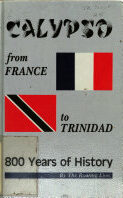
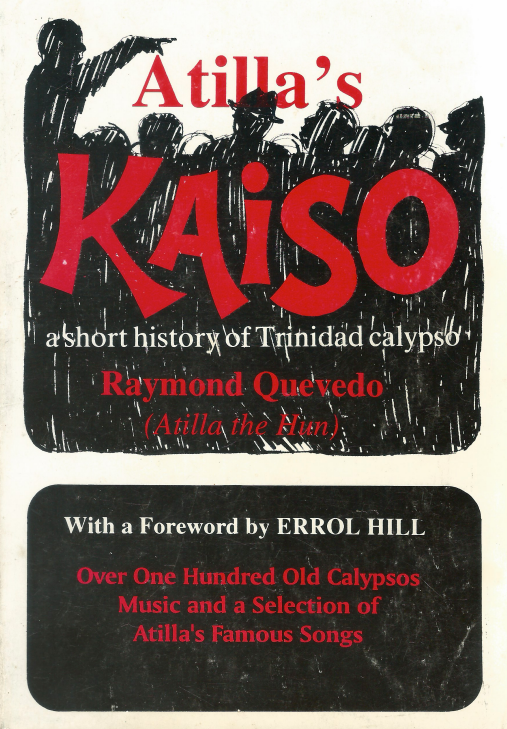
The book supposedly proved controversial in asserting European rather than African roots for calypso and Lion took issue with other calypso scholars like Dr. Hollis Liverpool, also known as calypsonian Chalkdust, who emphasized and published the African roots of calypso music. The book is rather available as an excerpt on Google books, rather on Amazon as a digital version, and as a printed version. There is supposedly a printed copy at Indiana Bloomington University (USA), which I personally can not even confirm. Strangely it is often the critical books that are hard to get, but I will try my best and see if I will be able to locate them.
While an article on the page of the Caribbean Memory Project mentions that Atilla the Hun was also writing a book, which was completed in the mid-fifties, the first book that was published under his family name, Raymond Quevedo, where Roaring Lion contributed a chapter it was released in 1983. This was about eleven years after his death, which could assume that the publishers and the co-writer John La Rose were able to make changes in the content of the book.
An excerpt from the book will be discussed in the article of Atilla the Hun on this page. The research made me quite curious about the content of these books. I hope I will get the chance to read them. If you have a copy, get in touch with me.

Over the years, Roaring Lion has been featured in several documentaries about Trinidad and Tobago’s music and Carnival culture.
In the following clip Lord Kitchener, the Mighty Sparrow and Roaring Lion are shown in a musical discussion….The scene was also featured in the documentary “Calypso Dreams” published in 2004.
The Mighty Sparrow, Roaring Lion and Lord Kitchener discuss in this clip the role of a calypsonian. Literally a piece of history.
Here is a video of Roaring Lion, introducing you to the history of the steel pan and the traditions of tamboo bamboo in his typical storytelling manner.
Roaring Lion’s „Jail Them“ was released in 1989, criticizing the black market in Trinidad and Tobago. Its importance will be discovered later in the article. Listen carefully, as calypso music always want you to.
1990s
Roaring Lion's Revival

In February 1991, he made a guest appearance at Port of Spain Queen’s Hall (Trinidad) as part of Rawle Gibbon’s “Sing De Chorus”, which was released as a very special compilation covering the icons of the early years, “Ugly Woman” was sung by Clem Haynes.
The show had a revival in 2018 and 2019 at Queens Hall again and at the Normandie Hotel in Port of Spain.
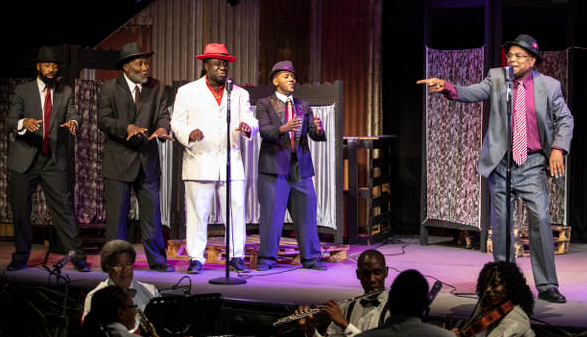
Together with Lord Pretender, they went to perform during Notting Hill Carnival in London. He was featured in march 1992 in the Folk Roots Magazine, which was Great Britain’s most influential world music magazine at that time.
With the assistance of Eddy Grant, Roaring Lion released an album called, “Standing Proud” in 1993. The popular musician originally from Guyana reunited Roaring Lion with his guitarist from the fifties in England, Fitzroy Coleman, for this recording.
It features “Netty Netty”, “Mary Ann”, “Land of Calypso”, “Sally Water” and other classics of the artist. It was released on vinyl, as CD but also as a cassette. I am not too sure if it is the same song released on the upcoming version as “Netty Netty”, which turned out to be a major hit in its typical 90s soca style. Eddy Grant is even offering his vocals as background here and there, a fantastic remake compilation, which I can only recommend to listen.
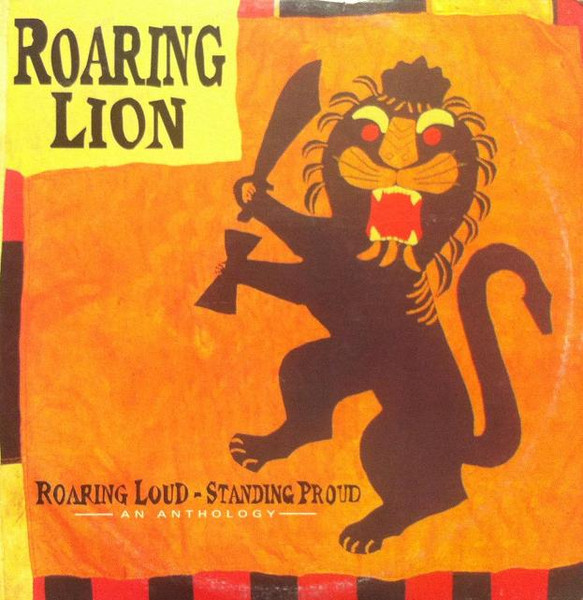
In 1994, Roaring Lion got the Lifetime Achievement Award for his accomplishments in calypso music. The laudatio at the „Caribbean Sunshine Awards“ was held by Eddie Grant in New York (USA). In this performance, the musician is accompanied by background vocals of Black Stalin and Calypso Rose. Fitzroy Coleman plays the guitar. The standing ovations gave me goosebumps. His thank you speech was more than humble. Enjoy this little piece of history.
At the tender age of 85, he released his final calypso album in 1995. “Viva Le King” features some more of his classics like “Ugly Woman” (again), “Woopsin Woopsin” as well as “Shango” (again), as well as a few new compositions.
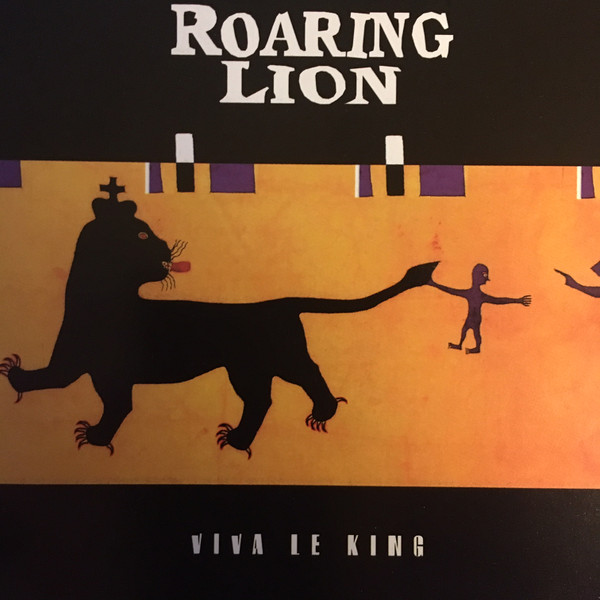
Shortly after, and for the Carnival celebration, “Papa Chunks” was released, a song that he wrong and sang first in 1938, but I believe never has been recorded before. Roaring Lion was signed by Ice Records, Eddy Grant’s label to whom he supposedly “assigned his works”. The song was a feature track in a ragga soca style, very famous at that time, with the soca artist General Grant.
Here is a quite sexy cover version of „Papa Chunks“ by Sound Revolution from 1995, performed in Brooklyn, New York (USA) in a quite typical ragga soca 90s style.
The song turned out to be one of the most popular songs that year. It was also a hit at several Carnival festivals throughout the Caribbean, North America, and Europe and is still played at festivals and parties today. His early “Netty Netty” seems even to be a type of anthem for the Caribana Festival in Canada ever since.
Long Live Roaring Lion
Forever Remembered
Since late 1997, and after all these successful steps he made in his career, health problems occurred and after a long period of suffering Roaring Lion passed away in 1999 in his home in Mt Lambert, reaching the age of 91 respectfully. He was laid to rest at Paradise Cemetry in San Fernando (Trinidad and Tobago), his grave covered with a statue of a roaring lion.
The calypso ambassador was regarded as an elder statesman and historian of calypso music. As a performer, he mesmerized audiences worldwide on big and small stages. Music historian, Professor Gordon Rohlehr, speaking on Lion’s death, said: “He was also important as a commentator and historian and someone who was deeply interested in the art, folk, and culture of his time and was a source of information”. And as Angelo Bissessarsingh documented: “His lyrics, delivered in rapid-fire style, show an impeccable command of the English language (as well as Trinidadian slang), and are replete with witty turns of phrase, humorous metaphors, and clever alliterations and internal rhymes”.
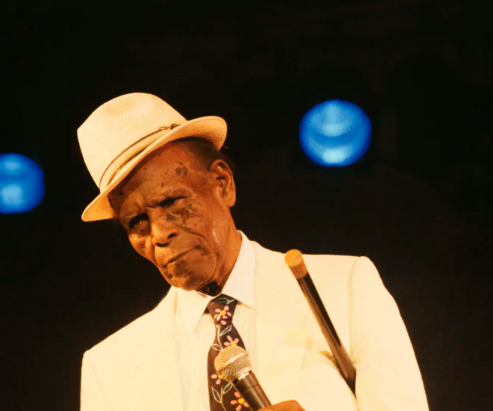
Still, many links on this page are not working. Maintaining music heritage digitally seems to become more and more a problem, concerning websites, and articles that are not curated again. Sometimes they just turn abandoned and sometimes they are going offline forever.
The following clip is a true piece of art, featuring Carnival impressions of the costume designer Peter Minshall at the beginning of his magnificent career. Out of nothing Roaring Lion’s acoustic version of „Caroline“ starts in such a phenomenal way. I think this is a beautiful song to remember him forever. I am kindly guessing that the subtitles are in Norwegian, but I am not 100 percent sure. Enjoy!
In 2002 the son of Roaring Lion announced publicly turning his father’s property in Mt. Lambert (Trinidad) into a Museum. These promises were not held and at this point in time I don’t know what happened to this property (now 20 years later!). According to the Roaring Lion Foundation, one of Roaring Lion’s daughters was also writing books, which supposed to portray the artist autobiographically. In an Interview with Alvin Daniell from 1993, Roaring Lion was proudly announcing this biography, but it seems never be published. Instead she was fighting breast cancer and released about about her overcoming of her illness. This book has never seem to be released.
Roaring Lion's Legacy
Inspiring the world
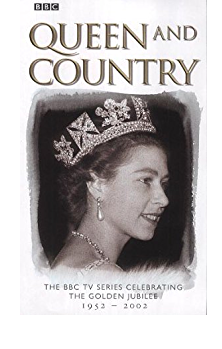
Also, posthumously Roaring Lion achieved greatness in the history of Great Britain. His song “The Royal Tour” was included in an official BBC documentary celebrating the golden jubilee of 50 years of Queen Elizabeth II. It was released an s video cassette collection and is still available today as a DVD.
„Roaring Lion’s „Netty Netty“ from the „Roaring Loud, Standing Proud“ album was re-released on the album „Trinidad Stories“ released in 2009. It achieved high popularity in Trinidad and Tobago and is nowadays considered a true classic.
In 2002 the son of Roaring Lion announced publicly turning his father’s property in Mt. Lambert (Trinidad) into a museum. These promises were not held and at this point in time I don’t know what happened to his property (now 20 years later!). According to the Roaring Lion Foundation, one of Roaring Lion’s daughters was also writing books, which were supposed to portray the artist autobiographically. In an Interview with Alvin Daniell from 1993, Roaring Lion was proudly announcing this biography, but it seems never to be published. Instead, she was fighting breast cancer and was released about overcoming her illness. Here is the proof.

In 2007 the exhibition “Carnival Long Ago”, adapted by a Roaring Lions song with the same name, was launched at the National Museum and Art Gallery in Port of Spain (Trinidad). From January to March 2020, and free to public, an exhibition titled “Carnival Long Ago” was reintroduced with the support of the Caribbean Yard Campus in a extended version featuring the work of 47 artists and six photographers, highlighting audiovisually through history.
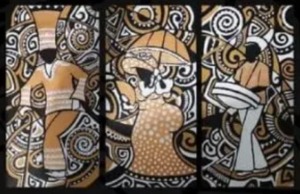
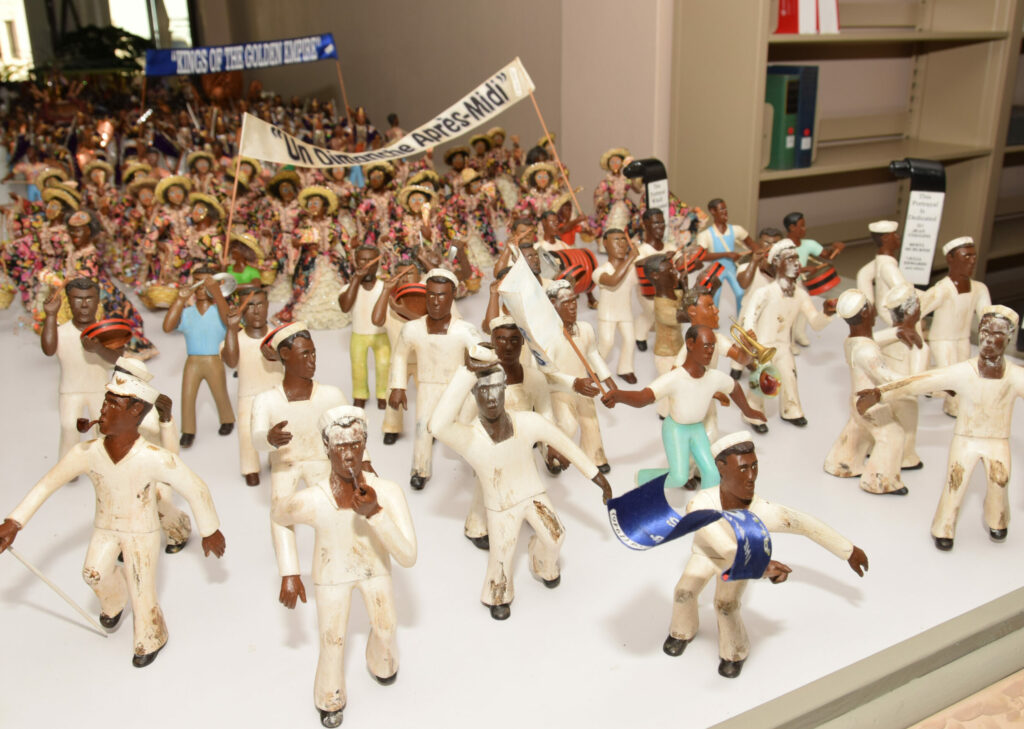
Exhibition „Carnival Long Ago“ (2020)
In 2013 the Holocaust Museum and Education Center of Southwest Florida (USA) created an exhibition “Calypso: Singing the News of the Day“ dedicated to calypso songs and their singers from 1938 to 1940 with wide information panels. These can be found on the website of the museum.
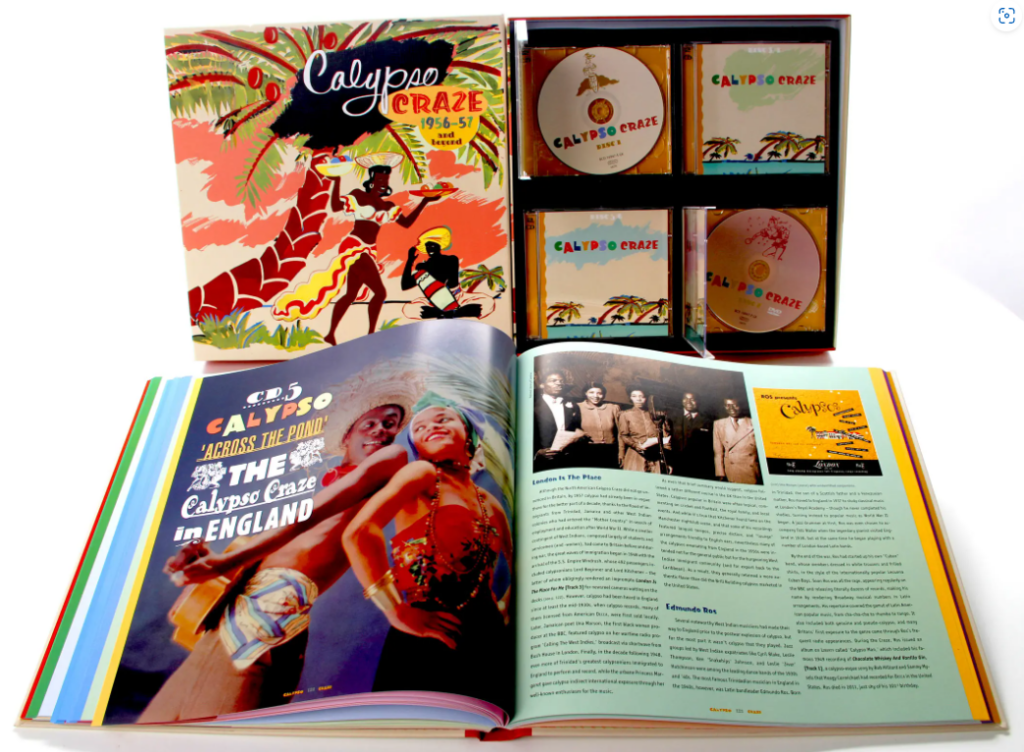
In 2015 the release of “Calypso Craze” by the worldwide well-respected German Bear Family was criticized in the media in Trinidad and Tobago. The compilation of 6 CDs, 1 DVD, and a 176-page book includes the songs of the classic traditional artists, but also all the, as in this article mentioned, chart super hits by Harry Belafonte (covering alone 27 tracks) and as well as other US singers. It leads the history of calypso in its heart to the United States, instead of publishing songs of the “true calypsonians” in Trinidad and Tobago. On top of this “historical” product is not the most affordable for most Trinbagonians (costing more than 1400 TT Dollars and around 124 Euro or US Dollars). The box set is available worldwide over Amazon and the Bear Family website, where a lot of other records and CDs (from musicians of Trinidad and Tobago) are getting sold to this day.
Roaring Lion can also be heard on several ‚various artists CD collections‘ like „From Trinidad In The 1930s (released in 1991), „Calypso Breakaway 1927 – 1941“ (released in 1990), Calypso Ladies (released in 1991), „History Of Carnival 1933 – 1939“ (released in 1993) and „Calypso Calaloo“ (released in 1993).
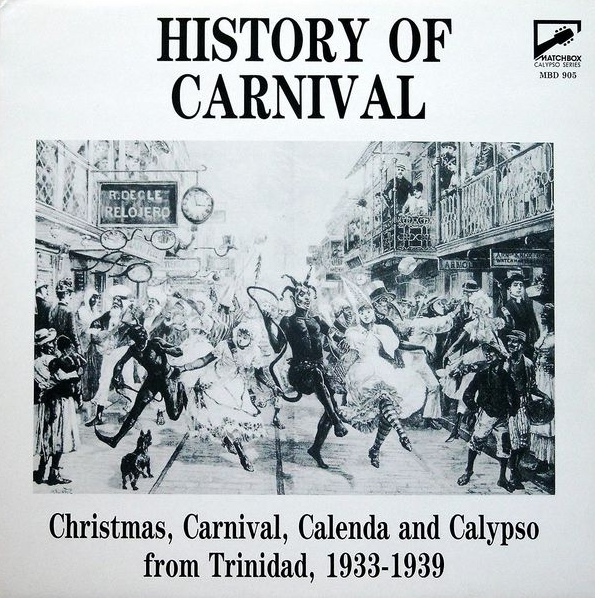
In 2017 the Academy for Performing Arts at the University of Trinidad and Tobago held a very special concert to honor Roaring Lion and Atilla the Hun, while they took calypso music around the world since 1934. The concert featured the Ibis Ensemble, led by violinist and arranger Simon Browne, soca and calypso artist, and students Chuck Gordon (as Roaring Lion), and Krisson Joseph (Atilla).
The program included educational entertainment with a presentation, and audiovisual clips in addition to live performances of many of the songs recorded in 1934 by Roaring Lion and Atilla the Hun, featuring the original instrumentation.

One of my personal favorites of the Roaring Lion is the „J’ouvert Barrio“. Here we start with the Sofrito Discoteque remake from 1976 named „Carnival Long Ago“ in very characteristic visuals from the J’ouvert celebration.

Oh, and in case it is a little French in the lyrics, they are giving you a small tutorial on how to pronounce it. Enjoy:
Etienne Charles donated a pure and deep jazz version of „J’ouvert Barrio“ to the music history on his album „Kaiso“ released in 2011.
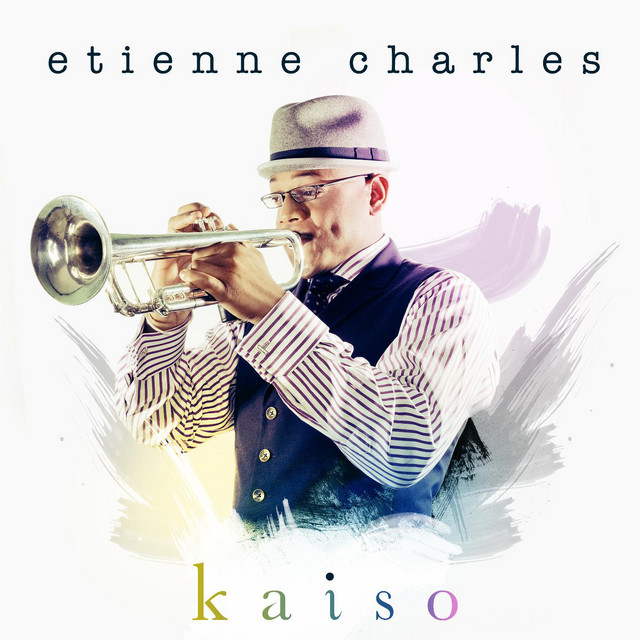
The soca riddim production „D Honor Riddim“ from Trinidad and Tobago, released in 2019, pays tribute to the pay tribute to legendary calypsonians, using the „J’ouvert Barrio“ of Roaring Lion as a base. A riddim production features different artists on the same background beat. In „De Bacchanal Band“, calypsonian Myron B contributes new lyrics for the song, which is sampled from Roaring Lion’s original. This track does not feature the original artist – sampling is a difference.
In 2020 the singer Fred Deshayes from Guadalupe released another version of „J’ouvert Barrio“ featuring Fwansa Ladrezeau, this time with French lyrics.

Commandant Coustou is a band with its base in France. It is one of many international bands and musicians inspired by calypso music, trying to recycle it in their own style. On their album, they present a cover version of „Jail Them“. The album was released in 2015. I truly appreciate their work.
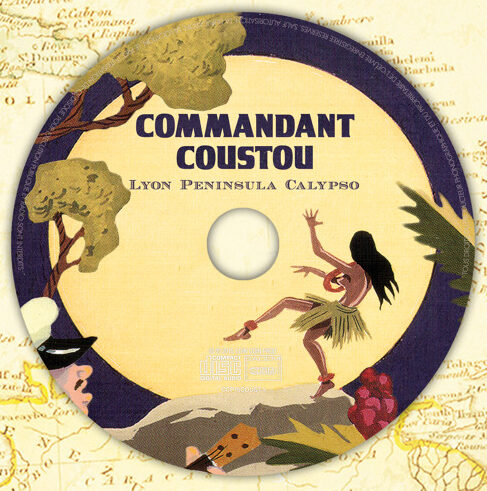
In 2020 the Amistad Caribbean Arts Camp (based in Cleveland, USA) recorded Roaring Lion’s super hit „Mary Ann“ as a virtual brass experience. Enjoy this instrumental and inspiring piece.
It is 2022 now and I finish writing down this fascinating story, which contains more than 100 years. As I believe, the music of the Roaring Lion will live on forever, but not every music release will be able to survive in the future. To me, it was not easy to find his music on modern streaming platforms, which are considered the future of music reception. Though many examples of recreating the original songs, that were recorded in the 1930s and 1940s, are just incredible achievements. If you can inspire others with your music, then I think you made everything in the totally right way.
Still, there are a lot of misconceptions in the history of Roaring Lion, which I would like to touch on for a small second. These include even his date of birth, his place of birth his childhood, and sometimes even the date of his death. On many pages on the internet, different dates are shown and information is shared that is basically incorrect.
One of the most common myths about the Roaring Lion is that his grandson is the famous actor Alfonso Ribeiro, which appeared famously as ‚Carlton‘ of the US TV sitcom “Fresh Prince of Bel-Air” with Will Smith as the main character. His father is another calypsonian, named Lord Hummingbird, also known as Albert Ribeiro with Trinidadian and Vincentian roots. The celebrity himself made a statement about this misconception publicly. The wrong information on the pages remains, of course.

I am hoping to be able to get in touch with one of the children or even grandchildren of Roaring Lion to still find answers to a few questions that I have. The artist supposedly had 10 children, of which reside in the United States, Norway, England, and Trinidad and Tobago.
The story of Roaring Lion has been written down, but changes will be made to this article, progressing with the virtual music archive of this page. One thing is sure, that nobody can’t deny, calypso was the true purpose in his life.

TT MUSIC LIBRARY - VIRTUAL MUSIC ARCHIVE | JUKEBOX TT
Note: This article is a "work in progress". With every visit, more content will be added. Get in touch, if you have something to share.
Caribbean Memory Project: Atilla de Hun
https:// www.caribbeanmemoryproject.com/quevedo-raymond.html
Blogger „Idle Tiger“ (2010): Roaring Lion: calypso medievalist
https:// idletigers.wordpress.com/2010/06/25/roaring-lion-calypso-medievalism/
Calypsoworld.org: Hubert Raphael Charles (The Roaring Lion)
(website offline since 2020)
Transcript of the interview at Night Lime (199): Tony Hall and Dennis Hall with The Roaring Lion
http:// www.pancaribbean.com/banyan/lion.htm (nowadays offline)
Ray Funk (1999): Kaiso No 25 – July 14, 1999
https:// www.mustrad.org.uk/articles/kaiso25.htm
Best of Trinidad: The Roaring Lion
http:// www.bestoftrinidad.com/calypso/lion.html
Roaring Lion Foundation – Website
https:// roaringlioncalypso.wordpress.com/achievements/
Debra Greaves (2020): Carnival Long Ago exhibition at museum
https:// newsday.co.tt/2020/02/07/carnival-long-ago-exhibition-at-museum/
Terry Joseph (2001): Royal salute for Roaring Lion
http:// search.co.tt/trinidad/lion/queen50.html (offline nowadays)
Music Web Encyclopedia for Popular Music (1989): Roaring Lion
http:// www.musicweb-international.com/encyclopaedia/l/L78.htm
(nowadays offline)
Terry Joseph (1999) / Re-Edit by Calypso Global: The Lion still roars – Raphael de Leon (1908-1999)
https://calypsoglobal.weebly.com
Calyoo Showcase (1993): Interview Roaring Lion with Alvin Daniell (Local TV Show)
Short Documentary: Roaring Lion Foundation / Lion & Tiger Calypsos of the World War II Era (2014) / Available on Youtube
Repeating Islands (2017): Age of Atilla and Roaring Lion Revisited
https:// repeatingislands.com/2017/10/03/age-of-atilla-and-roaring-lion-revisited/
Gary Steckles (2005): Ol’time calypso: long-time music
Caribbean Beat Magazine – Issue 74 (July / August 2005)
https:// www.caribbean-beat.com/issue-74/long-time-music-0#ixzz7gw8Pl8cF
When Steel Talks (2016): Roaring Lion is the grandfather of Alfonso Ribeiro
https:// whensteeltalks.ning.com/forum/topics/roaring-lion-is-the-gradfather-of-alfonso-ribeiro
Julien Kimble (2020): Interview on Alfoso Ribeiro – The Hardest-Working Man in Show Business
https:// www.theringer.com/tv/2020/12/2/21899590/alfonso-ribeiro-fresh-prince-interview-afv
Ethnic Celebs (2009): Alfonso Ribeiro
https:// ethnicelebs.com/alfonso-ribeiro/comment-page-1
Angelo Bissessarsingh (2011): The Roaring Lion
Republished on: Virtual Museeum of Trinidad and Tobago on Facebook
Wiki: Roaring Lion
https:// en.wikipedia.org/wiki/Roaring_Lion
BC Pires (2015): When Harry Met Calypso, Guardian Newspaper Trinidad
http:// www.guardian.co.tt/arts/2015-02-21/when-harry-met-calypso
Caribbean Insight – Television Show
G.B.T.V. Archives – Compilation about Roaring Lion
Nicholas Jennings (1995): Music Feature: Roaring Lion – At 87, he’s still king of Calypso, Toronto Star (Canada)
https:// www.nicholasjennings.com/music-feature-roaring-lion
Are you amazed by this project?
Show your support
More Artists to Discover
GENRE / CALYPSO
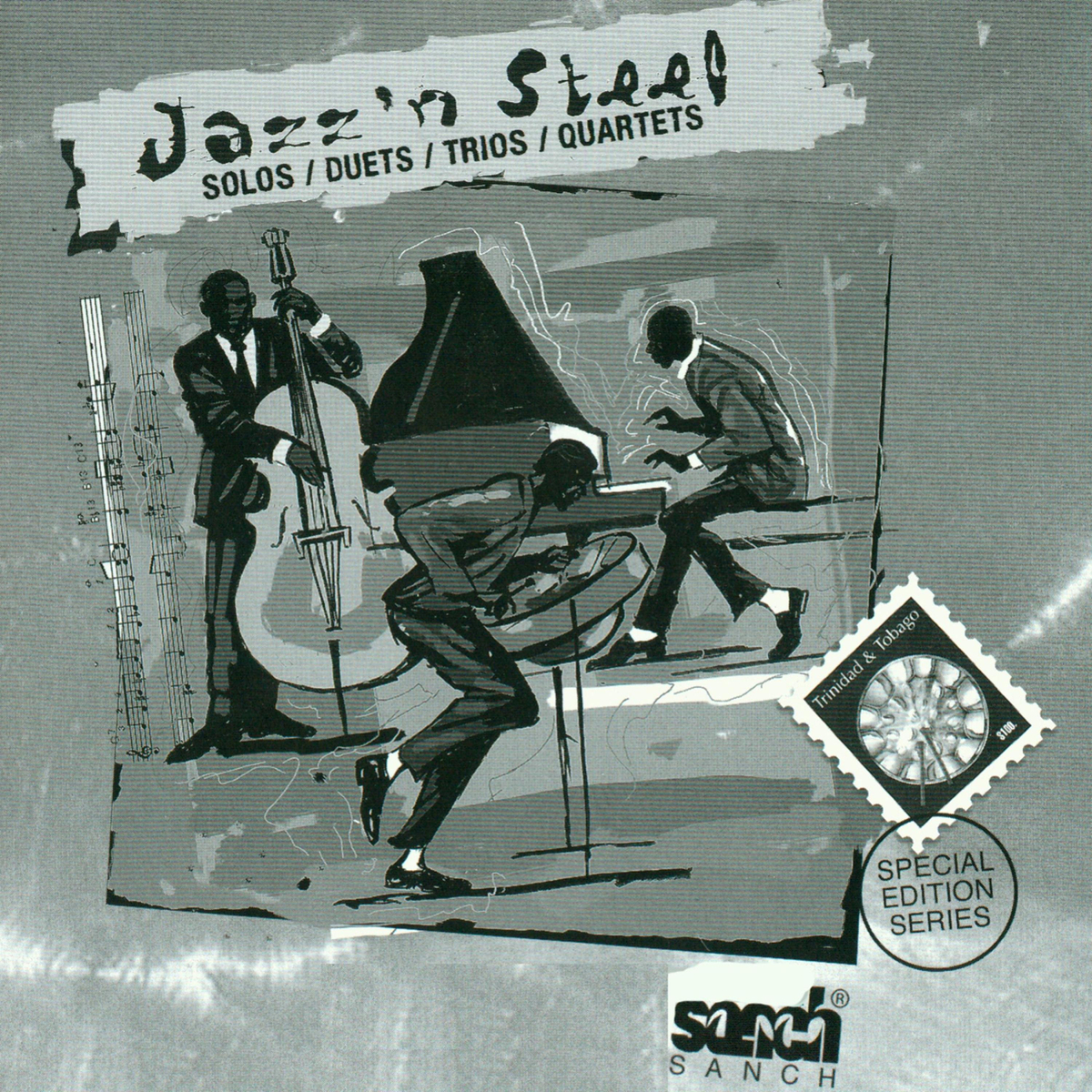
MORE ARTISTS SOON

Calypso
Roaring Lion
